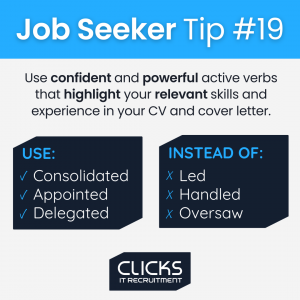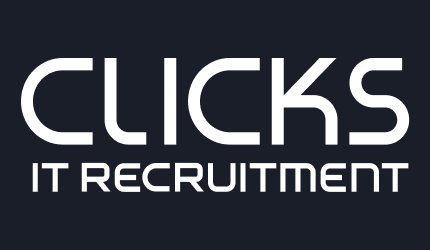Beat The Bots and Write a Resume That Gets Noticed
Navigating the job market can be frustrating and time-consuming. It’s more than likely when you apply for a job online, your application will be screened by Applicant Tracking System (ATS) bots before making it to a human recruiter, if it reaches them at all.
Most medium and large organisations use a ATS to manage the thousands of job applications they receive. Research shows that over 98% of Fortune 500 companies use an ATS to filter applications.
With each job you apply for, you are competing against a multitude of applicants and this can mean your resume is only ever reviewed by an ATS before being deemed unsuitable.
The good news is that we can help you write an ATS-friendly resume that will stand out, get past the automation and in front of the hiring manager. Follow these simple tips and give yourself the best chance to present yourself as a top candidate for any role.
Relevance is Requisite
Be clear about your experience relating to the role.
Requirements and scope can vary greatly between jobs of the same name. Where one organisation hiring a Business Analyst may focus on stakeholder management skills, another may seek business case experience, or technical rather than business-focused ability. These different areas of focus will be used to shortlist or reject applicants.
One of the most common pitfalls in getting your resume across the line is using one CV for every application. It is critical to tailor your CV to each roe to best highlight your relevant experience. If you are bringing transferable skills and experience from another role or industry, it necessary that you clearly connect how it is relevant to the role you are applying for. An ATS will not be able to read between the lines, and a recruiter will not have the time.
Keywords are Key
Including keywords in your resume from the job ad improves your chance of being ranked favourably by the ATS, and the recruiter who will ultimately read your resume.
Keywords should relate to:
- Skills
- Experience
- Knowledge
- Personal attributes
- The position title.
There are a range of online tools such as Jobscan, Targeted Resume, or SkillSyncer that can assist.
Using keywords taps into the principles of mirroring; a technique in which one person mimics another – although often unconsciously – to indicate interest and build rapport. Keywords provide a common language to create trust and build a connection.
This provides a clear path for the reader to quickly recognise how you match what they are looking for.

What You Omit is Just as Important as What You Include
ATS’ are good at reading text, but not much else.
Avoid getting fancy with the presentation of your CV, as it might rank poorly despite containing the right keywords. Specific things to avoid include:
- Tables
- Images
- Keywords in headers and footers
- Photos
- Flat scanned PDFs.
Headshots accompanying CVs are uncommon in Australia.
You should also do your best to avoid avoid using acronyms and spelling errors, as the ATS will not recognise them. Spell Check is your friend! Spelling mistakes are the fastest way to land in the reject pile at the recruiter review stage. This may sound harsh, but spelling, punctuation and grammar are an obvious way to cull hundreds of applications to a manageable number. If you can’t be take the time and care to check something as important as your CV, that will be seen as a reflection of the level of care and attention you apply at work, and recruiters will steer clear.
Using bullet points is an optimum choice for scanning and clarity. Also remember to submit your document in and ATS compatible format; either a Word document or PDF.

Talk ATS Terminology
Use the correct jargon. Most ATS’ are designed to understand common section headings within resumes such as:
- Summary
- Employment History
- Professional Development
- Education
Try not to deviate too much from this conventional language, or the ATS might not understand your CV.
Don’t be try to wow them with your title, Director of First Impressions when what they are looking for is a Receptionist.

Quality Not Quantity
Finally, when applying for jobs via an ATS, be selective and attentive.
You can send 100 bad CVs that will return a 0% conversion rate (from application to interview). This will not increase your chance of landing a role. Take your time, aim for two to three good applications each week – depending on what else you have on – and work towards achieving a 100% conversion rate.
The sole purpose of your CV is to help you get to the interview stage. You will be wasting time and energy if your CV is not optimised to be seen. Once you get to the next stage, you can dazzle them in person – and be part of a much smaller pool of competing candidates.
To help you prepare for future interviews, look at our list of commonly asked interview questions and how to answer them. Whether you have a behavioural-based interview or video interview, we’ve got you covered.
Luck is when opportunity meets preparation.









